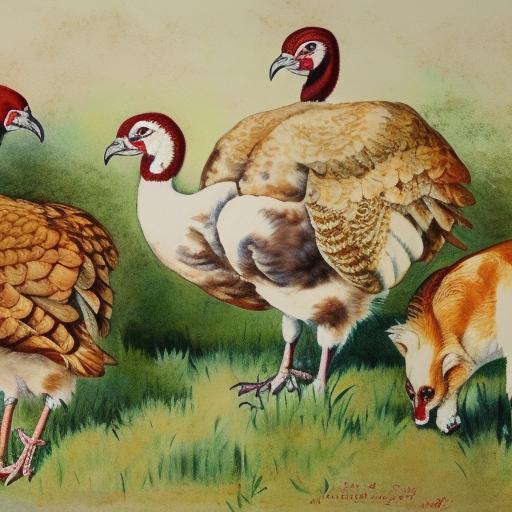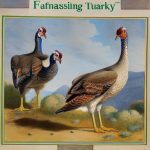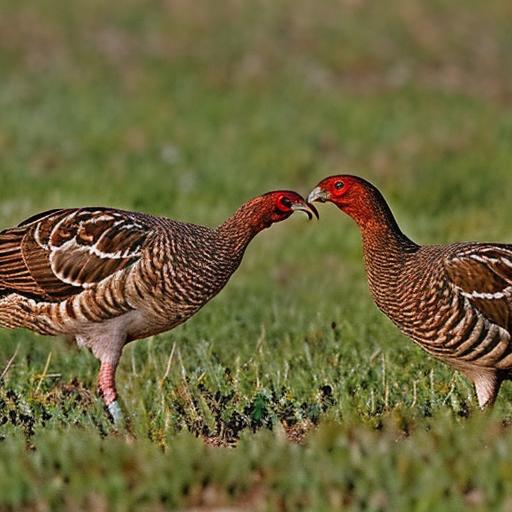Turkey breeds are a diverse group of domesticated birds that have been selectively bred for various purposes, including meat production, egg production, and ornamental purposes. There are several different breeds of turkeys, each with its own unique characteristics and traits. These breeds can be categorized into heritage breeds, standard breeds, rare breeds, and commercial breeds. In addition to domesticated turkey breeds, there are also wild turkey subspecies that are found in the wild. Each breed has its own distinct history, appearance, and temperament, making them fascinating subjects for poultry enthusiasts and farmers alike.
Key Takeaways
- Turkey breeds have been developed for various purposes such as meat production, egg production, and exhibition.
- Heritage breeds of turkey are traditional breeds that have been raised for generations and are known for their unique characteristics and flavor.
- Standard breeds of turkey are recognized by poultry associations and have specific breed standards for size, color, and other physical traits.
- Rare breeds of turkey are less common and may be at risk of extinction, often prized for their historical significance and genetic diversity.
- Commercial breeds of turkey are specifically bred for efficient meat production and are commonly used in the poultry industry.
Heritage Breeds of Turkey
Heritage turkey breeds are traditional breeds that have been raised by farmers for generations. These breeds are known for their hardiness, foraging abilities, and rich flavor. Some popular heritage turkey breeds include the Bourbon Red, Narragansett, and Standard Bronze. These breeds are prized for their ability to thrive in free-range environments and for their superior flavor and texture. Heritage turkey breeds are often raised on small farms and are favored by those who appreciate the unique qualities of these traditional breeds.
Another popular heritage breed is the Royal Palm, known for its striking black and white plumage and friendly disposition. The Midget White is another heritage breed that is prized for its small size and excellent meat quality. These heritage breeds are important for preserving genetic diversity within the turkey population and for maintaining the unique traits that have been developed over centuries of selective breeding.
Standard Breeds of Turkey
Standard turkey breeds are those that have been developed to meet specific production standards, such as size, growth rate, and meat quality. These breeds are often raised in commercial operations and are selected for their ability to efficiently convert feed into meat. Some popular standard turkey breeds include the Broad Breasted White, Broad Breasted Bronze, and Beltsville Small White. These breeds are known for their rapid growth and high meat yield, making them popular choices for commercial meat production.
The Broad Breasted White is the most common breed raised for meat production in the United States, known for its large size and fast growth rate. The Broad Breasted Bronze is another popular standard breed that is prized for its flavorful meat and impressive size. These standard breeds have been developed through careful breeding programs to meet the demands of the modern poultry industry, and they play a crucial role in providing a consistent supply of high-quality turkey meat to consumers.
Rare Breeds of Turkey
Rare turkey breeds are those that are at risk of extinction due to declining population numbers and limited genetic diversity. These breeds often have unique traits and characteristics that make them valuable for conservation efforts. Some rare turkey breeds include the Jersey Buff, White Holland, and Slate. These breeds are prized for their distinctive plumage colors and patterns, as well as their historical significance.
The Jersey Buff is a rare breed known for its beautiful buff-colored feathers and gentle temperament. The White Holland is another rare breed that is prized for its striking white plumage and excellent meat quality. These rare breeds are important for preserving genetic diversity within the turkey population and for maintaining the unique traits that have been developed over centuries of selective breeding.
Commercial Breeds of Turkey
Commercial turkey breeds are those that have been specifically developed for large-scale meat production in commercial operations. These breeds are selected for their rapid growth, high meat yield, and efficient feed conversion. Some popular commercial turkey breeds include the Hybrid Converter, Hybrid Converter Plus, and Hybrid Converter XL. These breeds have been developed through intensive breeding programs to meet the demands of the modern poultry industry and to provide a consistent supply of high-quality turkey meat to consumers.
The Hybrid Converter is a popular commercial breed known for its rapid growth rate and high meat yield. The Hybrid Converter Plus is another commercial breed that is prized for its efficient feed conversion and excellent meat quality. These commercial breeds play a crucial role in meeting the growing demand for turkey meat around the world and in providing a sustainable source of protein for consumers.
Wild Turkey Subspecies

In addition to domesticated turkey breeds, there are also wild turkey subspecies that are found in the wild. These wild turkeys have adapted to various habitats across North America and are known for their impressive plumage displays and elusive behavior. Some popular wild turkey subspecies include the Eastern Wild Turkey, Osceola Wild Turkey, and Rio Grande Wild Turkey. These subspecies have distinct ranges and habitats and are prized by hunters for their challenging behavior and impressive size.
The Eastern Wild Turkey is the most widespread subspecies, found in forests across the eastern United States and parts of Canada. The Osceola Wild Turkey is found in Florida and is known for its vibrant plumage colors and wary nature. The Rio Grande Wild Turkey is found in the central plains of the United States and is prized for its adaptability to diverse habitats. These wild turkey subspecies play a crucial role in maintaining healthy ecosystems and providing recreational opportunities for hunters and wildlife enthusiasts.
Conclusion and Summary
In conclusion, turkey breeds are a diverse group of domesticated birds that have been selectively bred for various purposes, including meat production, egg production, and ornamental purposes. There are several different categories of turkey breeds, including heritage breeds, standard breeds, rare breeds, and commercial breeds. Each breed has its own unique characteristics and traits, making them fascinating subjects for poultry enthusiasts and farmers alike.
Heritage turkey breeds are traditional breeds that have been raised by farmers for generations, prized for their hardiness, foraging abilities, and rich flavor. Standard turkey breeds have been developed to meet specific production standards, such as size, growth rate, and meat quality, making them popular choices for commercial meat production. Rare turkey breeds are at risk of extinction due to declining population numbers and limited genetic diversity, making them valuable for conservation efforts. Commercial turkey breeds have been specifically developed for large-scale meat production in commercial operations, providing a consistent supply of high-quality turkey meat to consumers.
In addition to domesticated turkey breeds, there are also wild turkey subspecies that are found in the wild, known for their impressive plumage displays and elusive behavior. These wild turkeys play a crucial role in maintaining healthy ecosystems and providing recreational opportunities for hunters and wildlife enthusiasts. Overall, turkey breeds are an important part of agricultural history and play a crucial role in providing a sustainable source of protein for consumers around the world.
If you’re interested in learning about different breeds of turkeys, you might also want to check out Poultry Wizard’s article on “The Chicken Coop Country Diner.” This article provides valuable insights into creating a comfortable and functional space for your poultry, which is essential for raising healthy and happy turkeys. Whether you’re considering adding a new breed to your flock or simply looking to improve your existing coop, this article offers practical tips and advice. Learn more here.
FAQs
How many different breeds of turkey are there?
There are approximately 6 different breeds of turkey recognized by the American Poultry Association.
What are the different breeds of turkey recognized by the American Poultry Association?
The different breeds of turkey recognized by the American Poultry Association are: Bronze, White Holland, Narragansett, Bourbon Red, Beltsville Small White, and Royal Palm.
Are there other breeds of turkey that are not recognized by the American Poultry Association?
Yes, there are other breeds of turkey that are not officially recognized by the American Poultry Association, such as the Midget White, Slate, and Black Spanish.
What are the characteristics of the different turkey breeds?
Each turkey breed has its own unique characteristics in terms of size, color, and temperament. For example, the Bronze turkey is known for its large size and bronze-colored feathers, while the White Holland turkey is known for its white feathers and calm disposition.
Are all turkey breeds suitable for meat production?
While all turkey breeds can be raised for meat production, some breeds are specifically bred for their meat quality and size, such as the Broad Breasted White turkey. Other breeds may be more suitable for their ornamental value or egg production.
Meet Walter, the feathered-friend fanatic of Florida! Nestled in the sunshine state, Walter struts through life with his feathered companions, clucking his way to happiness. With a coop that’s fancier than a five-star hotel, he’s the Don Juan of the chicken world. When he’s not teaching his hens to do the cha-cha, you’ll find him in a heated debate with his prized rooster, Sir Clucks-a-Lot. Walter’s poultry passion is no yolk; he’s the sunny-side-up guy you never knew you needed in your flock of friends!







